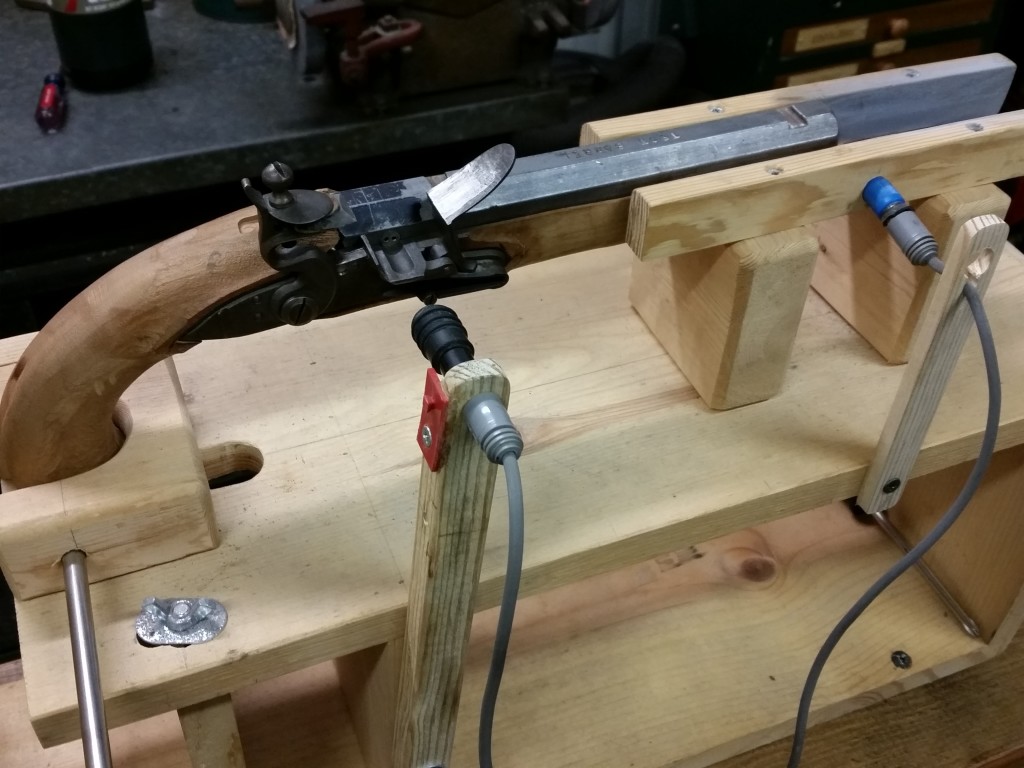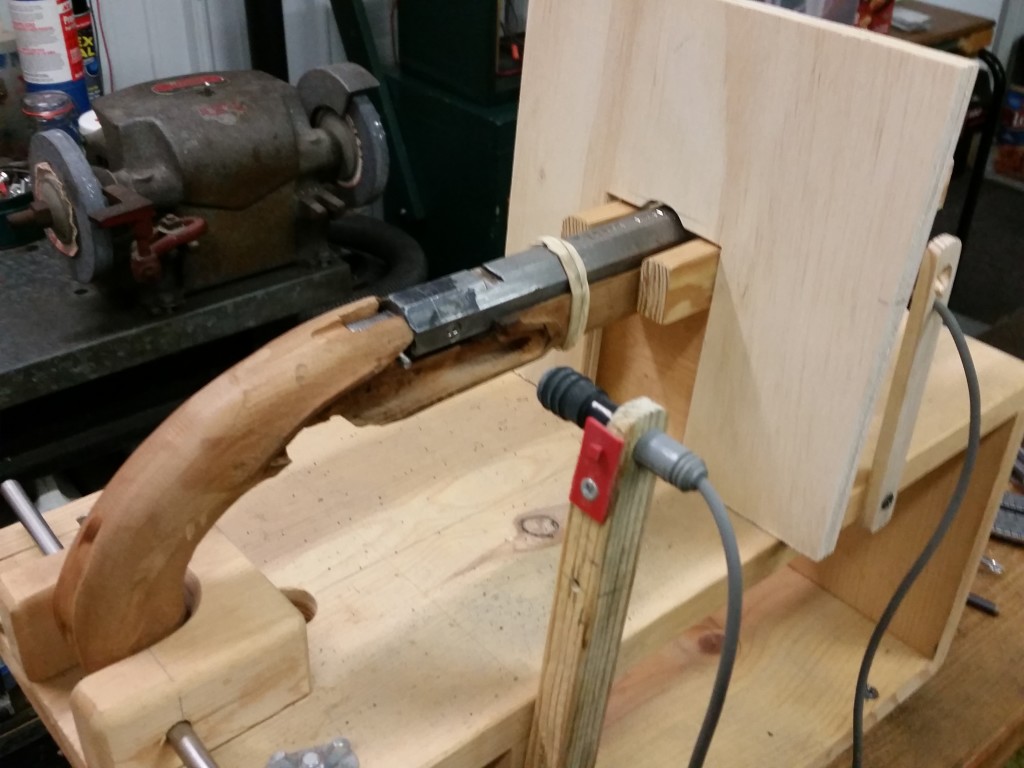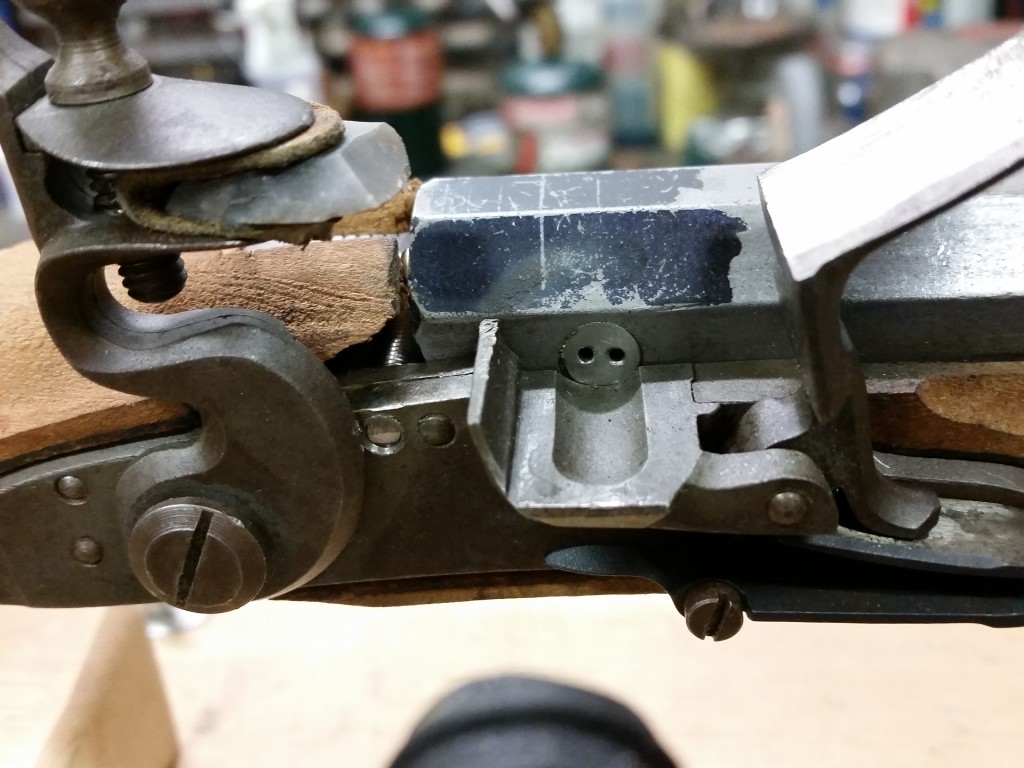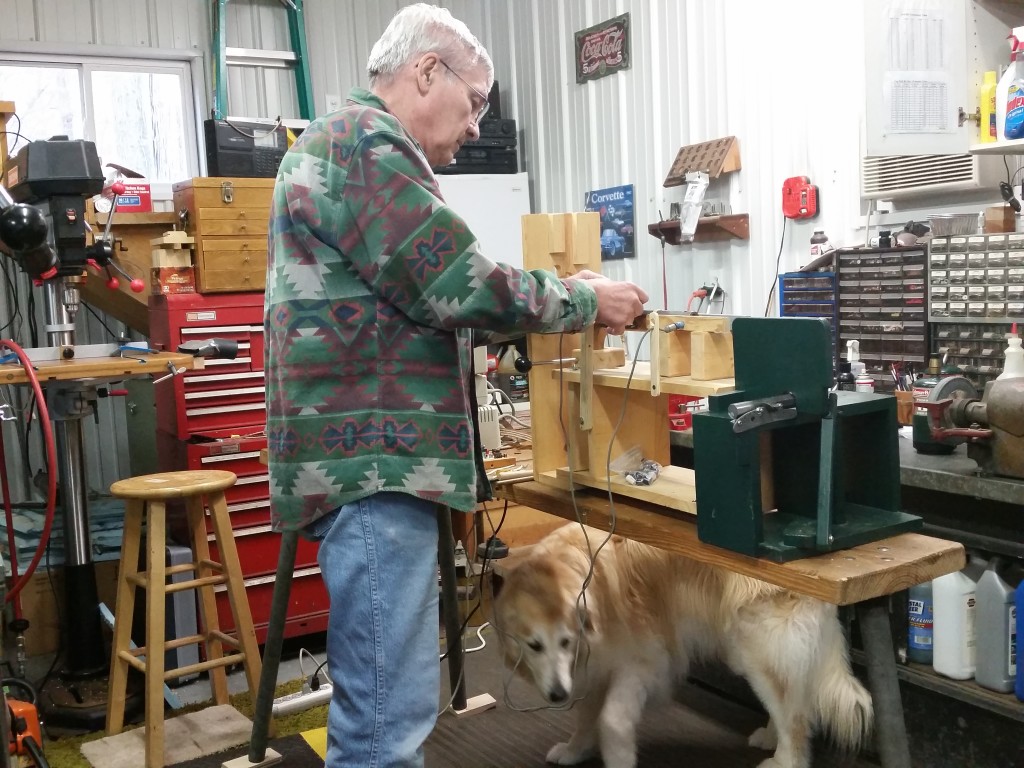Actually that is a good point , how do we know it's two vents, one might be a blind hole! For a tool etc.Like a disc set striker, the two holes make it easily removable with the right tool. I think that is a plus....
-
This community needs YOUR help today. We rely 100% on Supporting Memberships to fund our efforts. With the ever increasing fees of everything, we need help. We need more Supporting Members, today. Please invest back into this community. I will ship a few decals too in addition to all the account perks you get.

Sign up here: https://www.muzzleloadingforum.com/account/upgrades -
Friends, our 2nd Amendment rights are always under attack and the NRA has been a constant for decades in helping fight that fight.
We have partnered with the NRA to offer you a discount on membership and Muzzleloading Forum gets a small percentage too of each membership, so you are supporting both the NRA and us.
Use this link to sign up please; https://membership.nra.org/recruiters/join/XR045103
You are using an out of date browser. It may not display this or other websites correctly.
You should upgrade or use an alternative browser.
You should upgrade or use an alternative browser.
Two vent holes?? Whats up here?
- Thread starter Youngblood
- Start date

Help Support Muzzleloading Forum:
This site may earn a commission from merchant affiliate
links, including eBay, Amazon, and others.
- Joined
- Mar 1, 2022
- Messages
- 891
- Reaction score
- 1,048
I remember when I believe it was Mountain state muzzleloading came out with them. They were on purpose. They sold them for a few years then the whole company went away. Never tried them myself but saw some and they seemed to work OK. Alan Sandy is a very good builder so I can't see him needing a gimmick.
I don’t think is a gimmick, it’s just….. Berdan “primed”!!!!GIMMICK
The only time I saw a two holer was on my Aunt Oglesby's farm!
Last edited:
Is that listed as a Keith Casteel Rifle ?
There was an article in Muzzleloader magazine or MuzzleBlast about the two hole vents awhile back..
If I remember correctly, it didn’t speed up ignition or improve reliability..
Maybe Pletch was involved in the testing? It’s been awhile….
If I remember correctly, it didn’t speed up ignition or improve reliability..
Maybe Pletch was involved in the testing? It’s been awhile….
8Ball
32 Cal
I would get rid of this liner and scew a new one in...
Much like the marginally successful design of the human female:
The intake is too close to the exhaust.
The intake is too close to the exhaust.
White Oak
40 Cal.
I believe they were originally meant for double barrels.
- Joined
- May 6, 2013
- Messages
- 3,753
- Reaction score
- 8,377
Huh ?! Ain't that interesting ? Never seen or heard of such a thing ! For more reliable ignition after the first few shots perhaps ? ...insurance against a clogged touch hole ? .... Hmmmm .... Certainly different ....Saw this gun on gunbroker, its very nice looking but i never saw two vents before. You guys see this before?
View attachment 283175
https://www.gunbroker.com/item/1025230218
Y’all need to get out more often…
This test is a long time coming. A couple years ago at CLA, Steve Chapman and I were looking over a flint gun made by Allan Sandy. The vent Allan used had two smaller holes located horizontally. Allan said the vent was internally coned but used two .052″ holes. Allan said he didn’t know whether it was faster or slower than a normal vent. My reply was that I could time it. Allan offered to provide me a vent, and on the way home, Steve and I planned how the vent would be tested.
Time passed with many interruptions in the way. In the meantime Fred Stutzenberger entered the picture. I believe Fred saw the “double-hole vent” on Sandy’s table at the same show that we did. Fred however, was more prompt than we were and published an article on the vent in the August 2014 issue of MuzzleBlasts.
Without great detail, Fred’s article compared Allan’s double-hole vent with a single-hole vent that had the same area as the sum of the two smaller vents. His findings showed that shots fired with the double-hole vent had slightly higher velocities than the single-hole vent even, though the vent area was the same. The “choked-flow principle” (comparing circumference to area) is the likely cause. Fred explains this better than I do; please read the article.
Our testing focused only on ignition speeds. We compared ignition time of the double-hole vent (two .052″ holes) and the single-hole vent (.073″) Both vents have the same area, but vary in their circumferences.

The main question I have is, “If the choked flow principle tends to restrict flow leaving the vent, might it also restrict flow entering the vent, causing slower ignition?”
We used a 10″ barrel stub with a small Siler flint. The test used a double-hole vent with .052 holes and a single-hole vent with a .073 hole. We did 10 trials each and lit the pan with a red hot copper wire. Our reason for this was to prevent a changing flint edge from entering into the test. The single .073 vent was better both in speed and consistency.
Before finishing, we ran 5 trials each in which the pan was ignited by the small Siler. In those trials the single-hole vent was better, but by a smaller margin. None of the trials sounded abnormal to the ear. No matter the range from high to low, human senses could not tell the difference. In fact, Steve tried to guess and was invariably wrong.

Here you see the shield that prevented both photocells from triggering when the pan flashed
Interpreting the results can sometimes be misleading. In this case, I like the single-hole vent. However, I do have two doubts. (1) I have questions about the reliability of a vent as small as .052”. A double-hole vent with larger holes might alter the result. (2) I wonder if the shape of vent’s exterior would change the result.
The included photos show the fixture and the position of the photo cells used in the timing. The photo cell at the pan trigger the start, while the photo cell and the muzzle triggers the stop.

The last pic is a close up of the vent. These holes are .052″. BTW, the stock is a heavily mutilated factory second supplied by Jim Chambers. It was important because it allowed the sear to be struck from below by the plunger. It also allowed us to use a small Siler lock for an earlier test. At that time it allowed three different locks to be tested using the same lock mortice.
To conclude, I’d like to thank Allan Sandy for the chance to time his vent. I feel that this vent type is well worth studying. I’d like to repeat this with a .055” 2 hole vent.
My thanks also to Steve Chapman and Mike Coggeshall for their assistance in the testing.

Of course every experimenter needs a furry assistant
Larry Pletcher, editor
Two Hole Vent Test
Posted by: Larry Pletcher September 21, 2016in Experiments & Tests, Vent LinersThis test is a long time coming. A couple years ago at CLA, Steve Chapman and I were looking over a flint gun made by Allan Sandy. The vent Allan used had two smaller holes located horizontally. Allan said the vent was internally coned but used two .052″ holes. Allan said he didn’t know whether it was faster or slower than a normal vent. My reply was that I could time it. Allan offered to provide me a vent, and on the way home, Steve and I planned how the vent would be tested.
Time passed with many interruptions in the way. In the meantime Fred Stutzenberger entered the picture. I believe Fred saw the “double-hole vent” on Sandy’s table at the same show that we did. Fred however, was more prompt than we were and published an article on the vent in the August 2014 issue of MuzzleBlasts.
Without great detail, Fred’s article compared Allan’s double-hole vent with a single-hole vent that had the same area as the sum of the two smaller vents. His findings showed that shots fired with the double-hole vent had slightly higher velocities than the single-hole vent even, though the vent area was the same. The “choked-flow principle” (comparing circumference to area) is the likely cause. Fred explains this better than I do; please read the article.
Our testing focused only on ignition speeds. We compared ignition time of the double-hole vent (two .052″ holes) and the single-hole vent (.073″) Both vents have the same area, but vary in their circumferences.

The main question I have is, “If the choked flow principle tends to restrict flow leaving the vent, might it also restrict flow entering the vent, causing slower ignition?”
We used a 10″ barrel stub with a small Siler flint. The test used a double-hole vent with .052 holes and a single-hole vent with a .073 hole. We did 10 trials each and lit the pan with a red hot copper wire. Our reason for this was to prevent a changing flint edge from entering into the test. The single .073 vent was better both in speed and consistency.
Before finishing, we ran 5 trials each in which the pan was ignited by the small Siler. In those trials the single-hole vent was better, but by a smaller margin. None of the trials sounded abnormal to the ear. No matter the range from high to low, human senses could not tell the difference. In fact, Steve tried to guess and was invariably wrong.

Here you see the shield that prevented both photocells from triggering when the pan flashed
Interpreting the results can sometimes be misleading. In this case, I like the single-hole vent. However, I do have two doubts. (1) I have questions about the reliability of a vent as small as .052”. A double-hole vent with larger holes might alter the result. (2) I wonder if the shape of vent’s exterior would change the result.
The included photos show the fixture and the position of the photo cells used in the timing. The photo cell at the pan trigger the start, while the photo cell and the muzzle triggers the stop.

The last pic is a close up of the vent. These holes are .052″. BTW, the stock is a heavily mutilated factory second supplied by Jim Chambers. It was important because it allowed the sear to be struck from below by the plunger. It also allowed us to use a small Siler lock for an earlier test. At that time it allowed three different locks to be tested using the same lock mortice.
To conclude, I’d like to thank Allan Sandy for the chance to time his vent. I feel that this vent type is well worth studying. I’d like to repeat this with a .055” 2 hole vent.
My thanks also to Steve Chapman and Mike Coggeshall for their assistance in the testing.

Of course every experimenter needs a furry assistant
Larry Pletcher, editor
Larry Pletcher
50 Cal.
- Joined
- Jul 27, 2006
- Messages
- 1,313
- Reaction score
- 67
SMO,
Thanks for posting the test. I was just about to post it, but you beat me to it. It was fun to do. And you get to see part of the equipment it takes to time a vent. I couldn't do this with out my faithful Golden Retriever to advise me.
Regards,
Pletch
Thanks for posting the test. I was just about to post it, but you beat me to it. It was fun to do. And you get to see part of the equipment it takes to time a vent. I couldn't do this with out my faithful Golden Retriever to advise me.
Regards,
Pletch
I knew I remembered reading the article on the two holes when it was published..
I just wasn’t sure if you were involved or not… but once I looked it up it all became clear too me again…..
Thank You for taking the time too do the testing and the explanation & photos of your findings.

I just wasn’t sure if you were involved or not… but once I looked it up it all became clear too me again…..
Thank You for taking the time too do the testing and the explanation & photos of your findings.
Similar threads
- Replies
- 0
- Views
- 552
- Replies
- 86
- Views
- 3K




